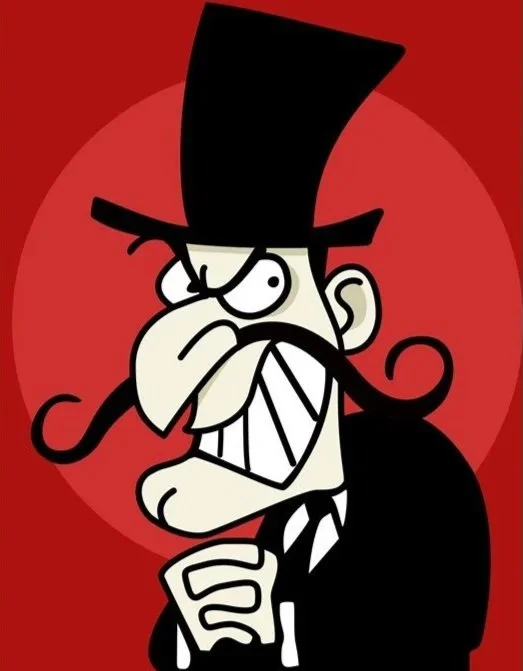It’s time for the PTMF to stop categorising men as negative stereotypes
Around 25 years ago, as an undergraduate, I learned about the anti-psychiatry movement of the 1960s. The iconoclastic ideas of characters like psychiatrists RD Laing and Thomas Szasz resonated with me and other students who were easily persuaded that psychiatry was the worst face of the establishment, wielding the oppressive medical model like a bludgeon against individuality and enlightenment.
In 2018, amid much promotion, the Power Threat Meaning Framework (PTMF) was launched onto the UK Psychology scene, heralding a new wave of anti-psychiatry. Like the 1960’s anti-psychiatry movement, it appeared to promise a radically improved new world where people with mental health problems would be valued as a real human beings, not reduced to a diagnostic label by the system.
The PTMF proposes that psychiatric diagnosis using the DSM is over-medicalising mental health. Many people – including me – have some sympathy with this view. However there are several problems with the PTMF, but the one I will focus on here is the PTMF view of men’s mental health. (For other critiques see here and here).
75% of suicides are male, yet men seek psychological help less than women do. A harsh and simplistic interpretation of this phenomenon is that men would rather kill themselves, drink themselves to death, or punch each other senseless than talk about their feelings with a professional therapist. However the profound and ongoing tragedy of men’s mental health makes it a huge elephant in the tiny waiting room of psychology that urgently needs to be addressed.
“According to the PTMF, one of the especially damaging reasons for unemployed men’s distress is because of the “potential loss of power in the home””
I started out reading the PTMF section on men’s mental health, with great interest. However having read it (see pages 124-8 of the full version of the PTMF) I feel it’s not only a lost opportunity to do something positive, but a step in the wrong direction.
According to the PTMF, men’s mental health problems can be understood in terms of masculinity and patriarchy. Let’s look at two examples: unemployment and domestic violence.
Unemployment can be difficult for women, but some research shows it can be more distressing for men. Being unemployed entails all sorts of losses, such as loss of an important source of income for family, loss of friendship with workmates, loss of job satisfaction etc. But according to the PTMF, one of the especially damaging reasons for unemployed men’s distress is because of the “potential loss of power in the home” (p.124). This would make sense if they meant there was a greater risk of not paying energy bills and thus getting the power cut off, but alas with the PTMF ‘power’ in this context refers to the alleged patriarchal conspiracy for men to wield power over women.
“Domestic violence is apparently “closely linked to social structures and ideology, including beliefs in women’s natural inferiority”. I wonder how many of the 757,000 male victims of domestic violence in the UK, around 90% of whom are the victim of a female perpetrator, would agree with this dystopian interpretation”
‘Loss of power in the home’ is unlikely to be foremost in the minds of unemployed men, and the foregrounding of this issue in the PTMF seems deeply unempathic. Moreover it’s hard to see how therapy for unemployed men based on loss of power in the home can be anything like as helpful as therapy based on other approaches e.g. finding another source of income, friendship, or meaning in life. It also seems odd to claim that men worry about losing the ability to wield power in the home, when power in the home is typically something that woman have more of than men do.
The PTMF’s view of domestic violence is even more difficult to believe. Domestic violence is, apparently “closely linked to social structures and ideology, including beliefs in women’s natural inferiority” (p.127). I wonder how many of the 757,000 male victims of domestic violence in the UK, around 90% of whom are the victim of a female perpetrator, would agree with this dystopian interpretation, which in effect casts victims of violence as being the cause of their own abuse. And I wonder how an explanation based on patriarchy accounts for the fact that domestic violence is higher in lesbian relationships than in heterosexual or gay relationships. Men are a third of victims of domestic violence, and for this and other reasons, trying to explain domestic violence as a symptom of men’s mission to have power and control over women is unrealistic, and moreover doesn’t lead to effective ways of reducing domestic violence.
“Although psychiatry is criticised for reducing people to diagnostic categories, the PTMF reduces men even further to a narrow and unforgiving stereotype of masculinity”
So in summary, the PTMF takes a disturbingly negative view of men and offers a hopelessly unrealistic account of the cause of men’s mental health issues. It is based on a warped notion of masculinity that minimises the positives of traditional male behaviour (e.g. protecting family) and overlooks the potential mental health benefits of masculinity (e.g. taking control of one’s mental health by seeking solutions). It is, furthermore, based on a warped view of the traditional male role as head of the household, as if every man aspires to be Henry VIII, and minimises the fact that traditionally the role for the vast majority of men has been to dutifully go out to work, often in dangerous conditions, to protect and serve their families, who stay in the relative safety of the home.
In summary, the PTMF takes the very worst case scenario of men – a joyless, domineering, misogynistic homophobe - and generalises it to all men. Although psychiatry is criticised for reducing people to diagnostic categories, the PTMF reduces men even further to a narrow and unforgiving stereotype of masculinity. And because men and masculinity are depicted as being so damningly flawed, the PTMF view doesn’t elicit empathy for men - quite the opposite – despite that fact that men are killing themselves at the rate of 13 per day in the UK. It is difficult to see how the PTMF can contribute to the therapeutic alliance for male clients, which is so important in therapy.
Since the launch of the PTMF, its weaknesses have been flagged up enough times (e.g. here and here) for it to be very clear that the PTMF would benefit a great deal by adopting a more realistic view of men and men’s mental health.
Scroll down to join the discussion
Disclaimer: This article is for information purposes only and is not a substitute for therapy, legal advice, or other professional opinion. Never disregard such advice because of this article or anything else you have read from the Centre for Male Psychology. The views expressed here do not necessarily reflect those of, or are endorsed by, The Centre for Male Psychology, and we cannot be held responsible for these views. Read our full disclaimer here.
Like our articles?
Click here to subscribe to our FREE newsletter and be first
to hear about news, events, and publications.
Have you got something to say?
Check out our submissions page to find out how to write for us.
.
















































